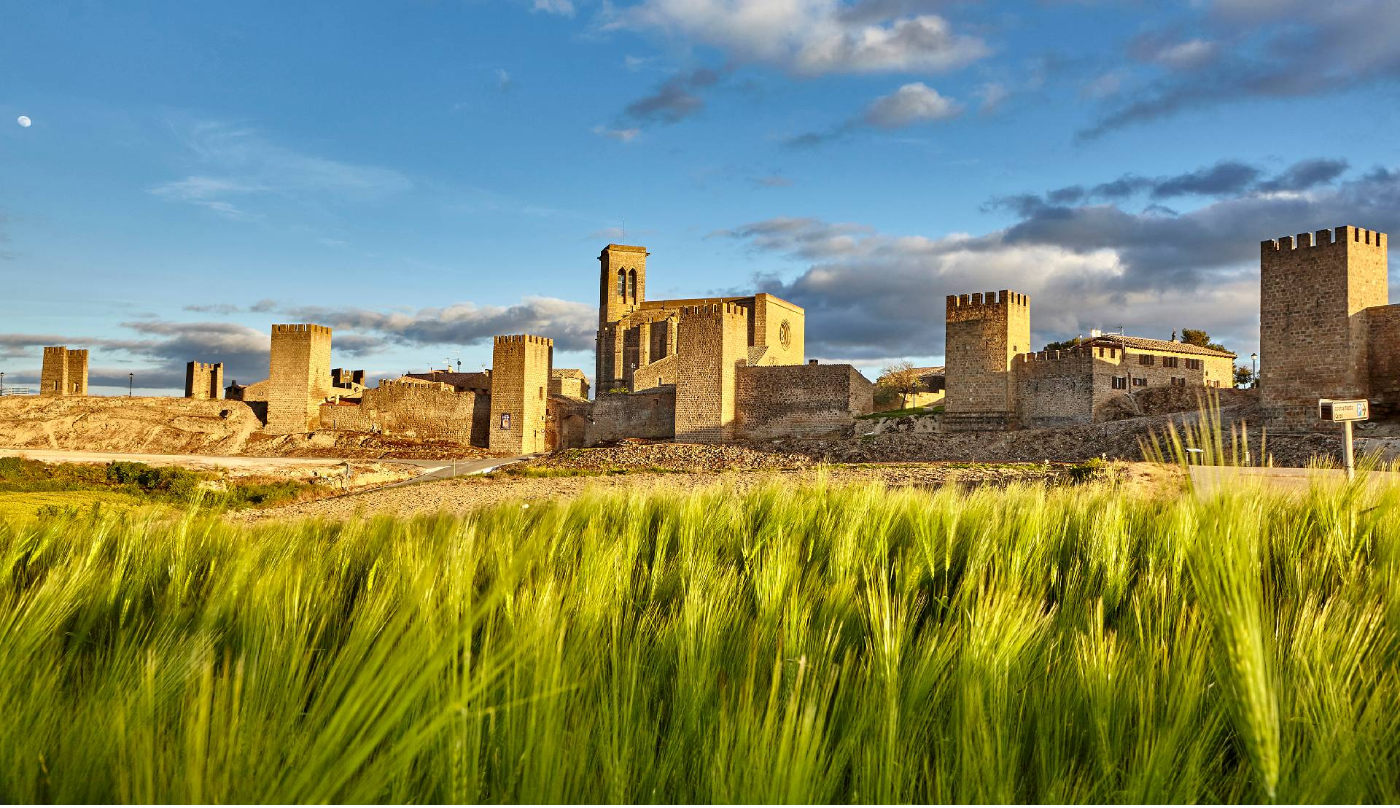Monuments on the map
Romanesque monuments
-
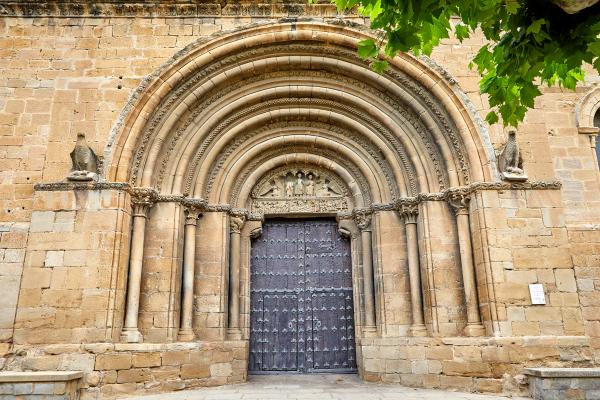 San Pedro eliza
San Pedro eliza
San Pedro eliza
In Olite. The oldest church in the town. It dates from the 12th century, with a ground plan of three naves and a mid-13th century cloister with rounded arches on top of double capitals. The rounded front is elegant, sober and domed and is a mix of the Romanesque and Gothic styles. The remains of the polychrome decoration that covered it in the distant past can still be seen.
-
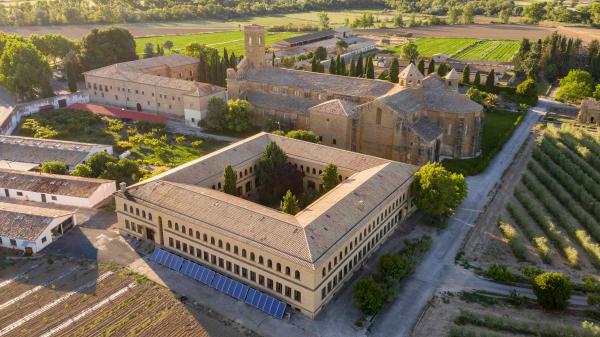 Monastery of La Oliva
Monastery of La Oliva
Monastery of La Oliva
In Carcastillo. Its spacious Romanesque church is one of the best examples of Cistercian art in Spain, outstanding features being the chapterhouse - one of the most harmonious in Spanish Romanesque - and the Gothic cloister. On the 14th-century façade some elements from the old Romanesque church were used, for example the Chrismon on the tympanum and the corbels on the upper cornice.
-
.jpg) Romanesque bridge
Romanesque bridge
Romanesque bridge
In Puente la Reina. Built in the 11th century over the river Arga, it was one of the most important mediaeval bridges in Europe. It has six rounded arches resting on prism-shaped pillars. The eastern one is buried underground nowadays. It originally had three defensive towers, one of which displayed the Renaissance image of the Virgin of El Puy, the protagonist of the legend of the Txori (bird).
-
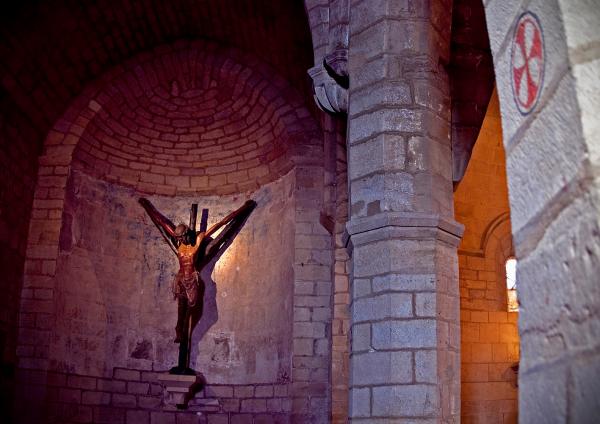 Church of the Crucifix
Church of the Crucifix
Church of the Crucifix
In Puente la Reina. Built by the Knights Templar at the start of the Rúa Mayor (main street), it has two naves, one Romanesque and the other Gothic. The Romanesque front displays rich ornamentation, the main motif being pilgrims' shells.
-
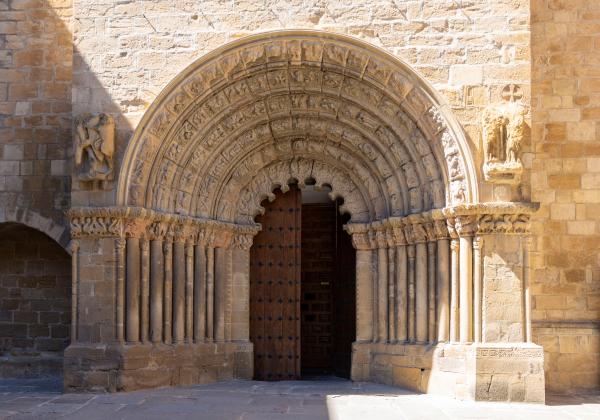 Church of Santiago el Mayor
Church of Santiago el Mayor
Church of Santiago el Mayor
In Puente la Reina. Reconstructed in the 16th century, some of the outer walls and two beautiful fronts are preserved of the old Romanesque church. One of them stands out for its Moorish influence.
-
.jpg) Church of Santa María de Eunate
Church of Santa María de Eunate
Church of Santa María de Eunate
In Muruzábal. One of the most beautiful and suggestive churches on the Pilgrim’s Way to Santiago. It is solitary, simple, original and mysterious. Its octagonal ground plan and outer cloister with 33 arches make it different to any other Romanesque church. The capitals, although highly eroded, show animals, heads and plant motifs.
-
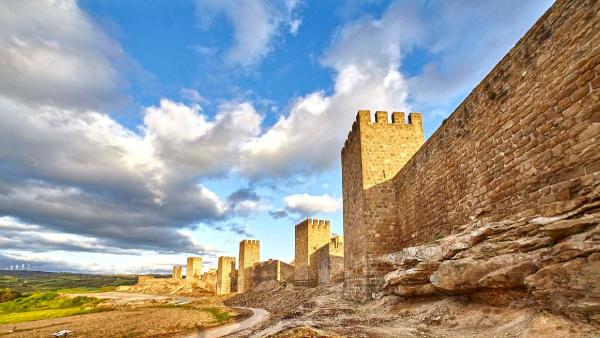 The Cerco de Artajona
The Cerco de Artajona
The Cerco de Artajona
In Artajona. Perfectly adapted to the profile of the hill it stands on, this popular mediaeval fortification is the biggest in the Central Zone of Navarre. Its 11th-century walled complex still preserves 9 of the 14 original towers, linked by a parapet walk.
-
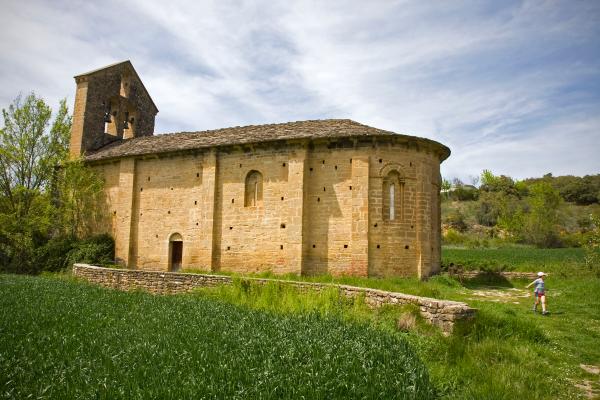 Chuch of San Pedro ad Víncula de Echano
Chuch of San Pedro ad Víncula de Echano
Chuch of San Pedro ad Víncula de Echano
In Olóriz. Built at the end of the 12th century, it consists of a nave in three sections with a pointed half-barrel vault. Its main front faces north instead of south or east, as was usually the case. The distinguishing icons it contains reflect secular themes.
-
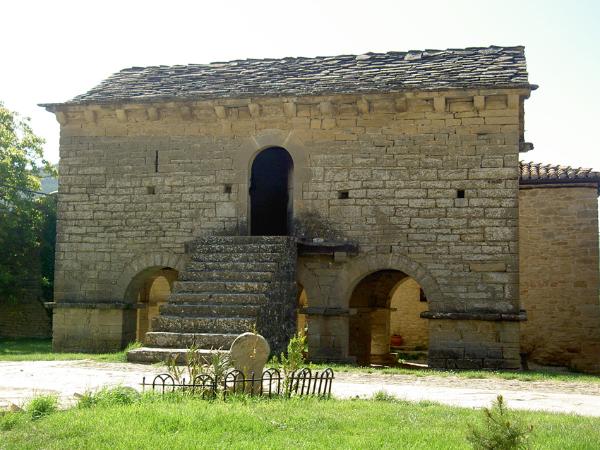 Hórreo de Iracheta
Hórreo de Iracheta
Hórreo de Iracheta
In Iracheta. A granary built in the 11th or early 12th century with ashlars and a rectangular ground plan in two parts. The interior contains 10 rounded arches that sit on sturdy pilasters. The roof is hipped and the tiles are made of sandstone. It was used for storage and for and collecting the diezmo (a tax payable to the church).
-
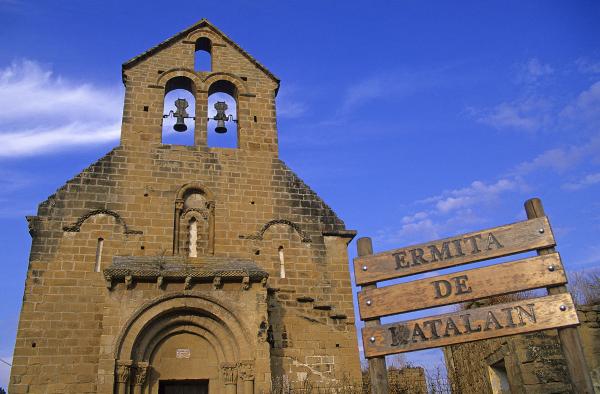 Church of Santo Cristo de Cataláin
Church of Santo Cristo de Cataláin
Church of Santo Cristo de Cataláin
In Garinoain. Built in the early 13th century, it was a pilgrims' hospital on the Pilgrim's Way to Compostela and reflects the influence of the Jaca style of architecture. Its graceful belfry with three openings is a twin of the one at Echano. On the outside, the striking features are the chancel of the church and the apse with three rounded windows and decorated capitals. Its interior is in the early Romanesque style, as is the baptismal font.
-
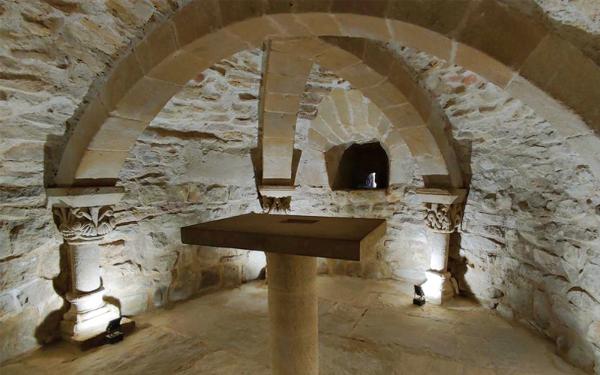 Church and crypt of San Martín
Church and crypt of San Martín
Church and crypt of San Martín
In Orisoain. Built in the mid-12th century and rediscovered in 1965, it is one of only four churches in Navarre with crypt. It is semi-circular in shape and has six columns with rough but profusely decorated capitals, covered with a half-barrel cul-de-four vault. The masterly sculpted front of the church consists of three rounded arches that stand on archivolts, decorated with plant motifs and cylindrical stone in the Jaca style.
-
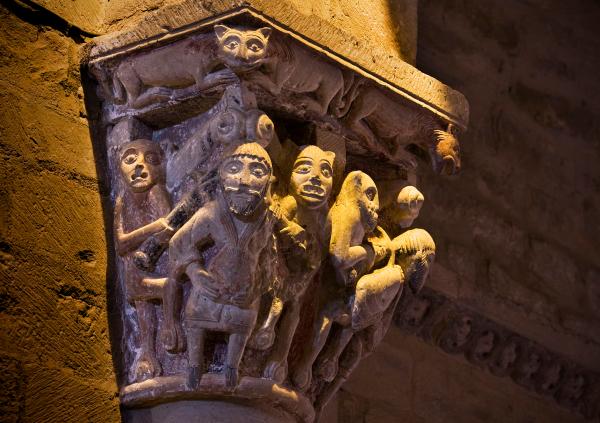 Church of La Asunción
Church of La Asunción
Church of La Asunción
In Olleta. A fine example of rural Romanesque architecture from the second half of the 12th century, it belonged to the Order of the Nights of St John of Jerusalem. With a single nave and three splayed windows in the apse, it stands out for its beautiful Chrismon on the tympanum of the front of the church and a dome topped by a small lantern of lowered arches.
-
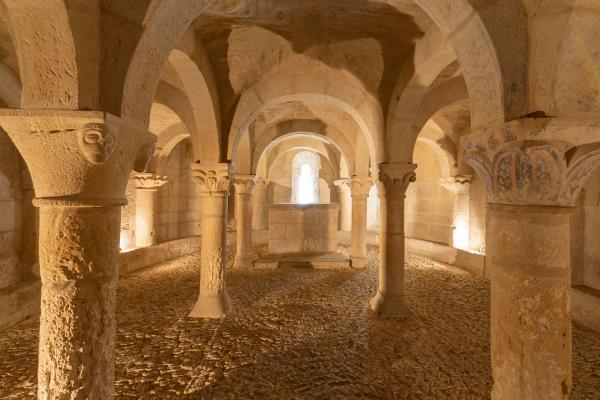 Église Saint-Martin de Tours
Église Saint-Martin de Tours
Église Saint-Martin de Tours
In San Martín de Unx. A fine example of rural Romanesque architecture in Navarre and an excellent viewpoint over the surrounding landscape. Striking features are the baptismal font, the decoration of its capitals and the Romanesque crypt.
-
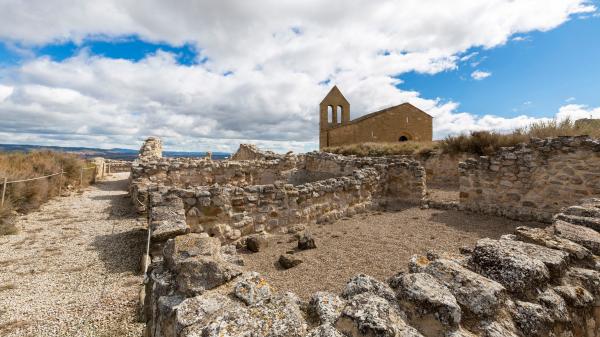 Walled settlement of Rada
Walled settlement of Rada
Walled settlement of Rada
In Murillo el Cuende. Strategically located on top of a hill, it had great defensive importance in the mediaeval era. It houses remains of a 12th-century castle, a 100-meter-long canvas of the town's walls (also 12th-century), an old round tower (early Romanesque) and the church of San Nicolás (late 12th century).


